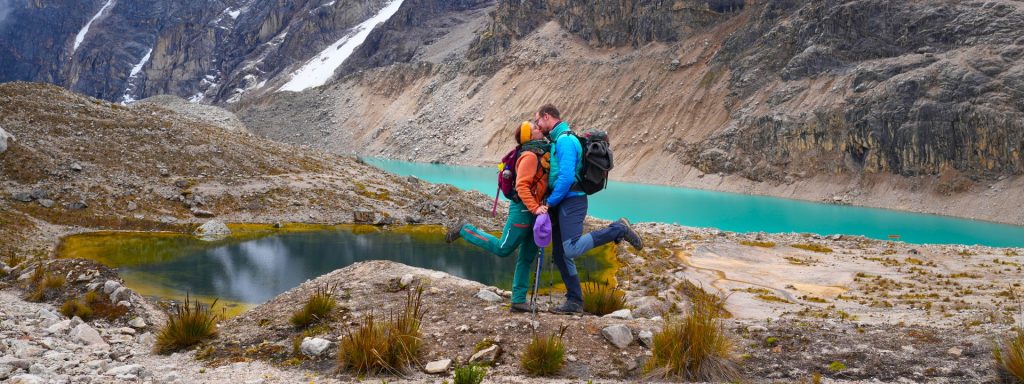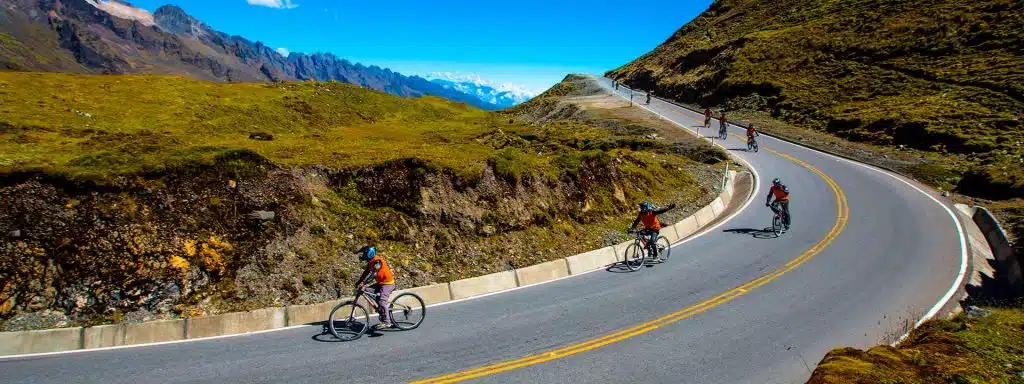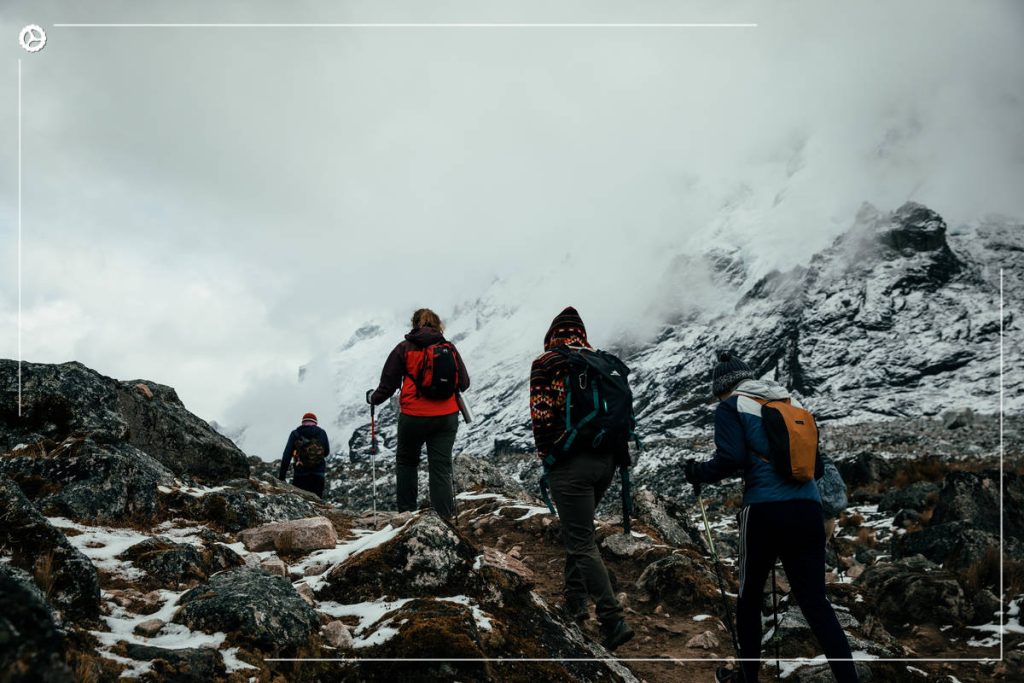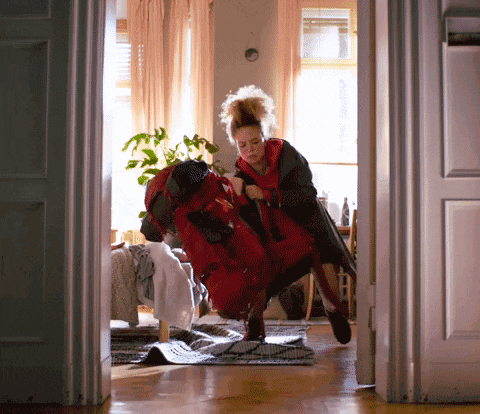Brief History of Cusco
Periodo inca y Qorikancha
Cusco was the political and religious capital of the Tahuantinsuyo, the Inca Empire. From this city, the four regions of the empire were organized and connected by a high-mountain road network that linked the coast, highlands, and jungle. The Qorikancha, the main temple dedicated to Inti (the Sun God), combined astronomy, ritual, and the administration of offerings. Its finely polished stone walls, with perfectly fitted joints and trapezoidal niches, demonstrate engineering focused on seismic stability and thermal control.
The complex was not isolated; it formed part of an urban layout with canals, terraces, and plazas aligned to solar events. This harmony between architecture and landscape explains why many spaces in Cusco still align naturally with the sun’s movement and surrounding topography today.
Conquest and Colonial Legacy
With the conquest, the Spanish took advantage of the solid Inca foundations. On top of them, they built temples, convents, and mansions. The resulting city did not erase Inca Cusco; it displays it in its very foundations. From there comes its current appearance, where polygonal stone bases support baroque façades and colonial courtyards.
This layering is also reflected in art: Cusqueña painting with European iconography and local elements, gilded altarpieces coexisting with cyclopean walls, and narrow streets that still follow ancient alignments. That blend is not mere decoration; it is the record of how two systems of power and belief shared the same urban space.
UNESCO Heritage and Preservation
UNESCO listed Cusco for its urban continuity and construction techniques that have proven seismic resilience. Conservation here involves two main challenges: protecting open-air archaeological structures and managing a living center with commerce, housing, and mass tourism. Local policies prioritize the maintenance of stone walls, height control, and the restoration of tile roofs, along with emergency plans for earthquakes and heavy rains.
Visitors can sense this productive tension: active streets that are at the same time regulated so that the heritage city remains livable and not just a backdrop.
What to See in the City
Main Square, Cathedral, and Church of the Society of Jesus
The Plaza de Armas, formerly Haukaypata, is the heart of the historic center. The Cathedral houses paintings of the Cusqueña School, wood carvings, silverwork, and an impressive choir; the Church of the Society of Jesus stands out for its façade and altarpieces. It is worth taking time to explore the interiors, the side chapels, and to watch urban life unfold from the surrounding arcades. Within just a few blocks, you will find colonial mansions with courtyards, passages with balconies, and small chapels that open at specific times.
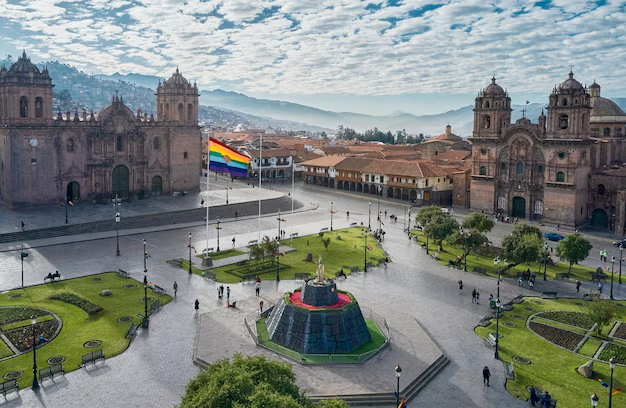
Qorikancha and the Convent of Santo Domingo
At Qorikancha, the city’s cultural layering becomes clear. The Inca walls—straight, polished, with invisible joints—support the Dominican nave and cloister. Visiting the site allows you to read three histories at once: the Inca sun temple, the colonial convent, and the modern museum that interprets the pieces and their contexts. Observe the geometry of the rooms, the slope of doors and windows, and how light moves through the corridors at different times of day.
Sacsayhuamán, Q’enqo, Puka Pukara, and Tambomachay
These complexes form a ring just minutes from the city center. Sacsayhuamán impresses with zigzagging walls built from blocks weighing several tons; Q’enqo preserves carvings and ritual channels on living rock; Puka Pukara controlled routes and mountain passes; Tambomachay showcases finely channeled water fountains. Together, they reveal the ceremonial and strategic importance of the hills surrounding the city.
San Blas, Viewpoints, and Local Art
San Blas is a neighborhood of artisans, workshops, and small hostels. Its steep streets open to views of rooftops and bell towers. Here you can see processes of ceramics, woodcarving, and jewelry making, buy signed works, and relax in quiet cafés. At sunset, the viewpoints of San Blas and San Cristóbal offer full views of the urban basin and help you understand the relationship between the city center, surrounding hills, and terraces.
Museums: Inka, MAP, and Casa Concha
The Inka Museum presents local history through ceramics, textiles, and metallurgy. The Museum of Pre-Columbian Art (MAP) displays pieces selected for their aesthetic quality and modern curation. Casa Concha (Machu Picchu Museum) provides context about excavations and the return of artifacts. Visiting at least one balances the experience between site, object, and narrative.
San Pedro Market
This is the place to observe daily life and local supply chains: regional breads, cheeses, cured meats, cacao, highland jungle fruits, juice stands, and food stalls. Go early. Ask permission before taking photos and keep an eye on your belongings in crowded aisles. When buying, ask about origin and usage—many products have ritual as well as culinary purposes.
Curiosities of Cusco
The “Puma City”
A traditional interpretation suggests that the Inca urban layout represented a puma. Sacsayhuamán would be the head, the Main Square the heart, and the rivers and ravines the outline. Beyond its geometric accuracy, the idea reflects an Andean principle: the city as a living being that integrates sacred hills, water, and ceremonial routes.
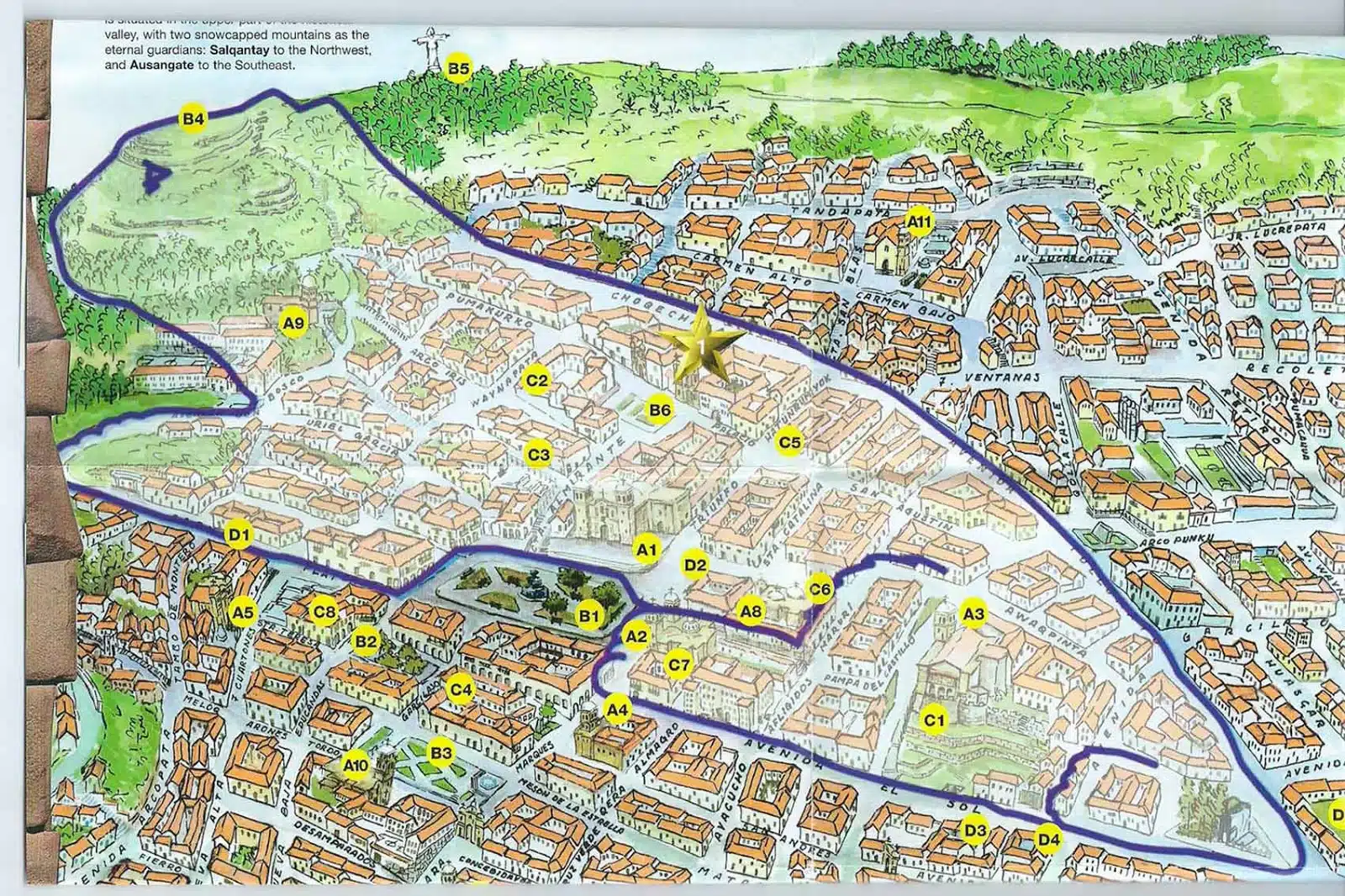
Seismic Stonework
The polygonal walls are not an aesthetic whim. Their irregular joints distribute stress and prevent fracture lines. Finishing with abrasives, progressive carving, and gravity fitting explains their precision. The famous Twelve-Angled Stone is a well-known example, but the system repeats across hundreds of walls throughout the city.
Qorikancha and the “Sun Garden”
Colonial chronicles describe a ceremonial garden with llamas, plants, and agricultural elements made of precious metals. Though those pieces are lost, the site preserves walls that let visitors imagine how offerings, solar observations, and processions were organized around the temple.
Arquebus Angels
In churches downtown you’ll see angels holding firearms. This is not mere exotic imagery—it reflects the local adaptation of European iconography with Andean features, regional clothing, and highland landscapes. It marks the Cusqueña School, where Indigenous and mestizo workshops dominated the colonial art market.
Stone Acoustics
At Sacsayhuamán and Q’enqo, certain surfaces reflect and amplify the voice. The arrangement of courtyards, stairways, and corridors channels sound, useful for ceremonies and crowd control. Try speaking toward the inner faces of some carved rocks—you’ll notice the echo.
Living Quechua Toponymy
Hatun Rumiyoc, Pumakurko, Qolqampata: the names describe functions and features of the landscape. Knowing their basic meaning helps you read the city without a guidebook and appreciate the continuity of Quechua in urban life.
Viewpoints and Cristo Blanco
From Pukamoqo, San Blas, or San Cristóbal, you can understand the valley basin and identify the archaeological ring around the city. These are the best spots to orient yourself and plan walks according to slopes and real travel times.
Mysteries of Cusco
Underground Passages
Oral tradition speaks of tunnels connecting Qorikancha, Sacsayhuamán, and other temples. No authorized tourist routes or confirmed traversable sections exist, but the persistence of the story shows how Cusco is perceived as a layered city still partly unexplored.
“Impossible” Stone Fitting
Perfect joints have inspired fantastic theories. The most accepted technical explanation combines wedge extraction, rough shaping, abrasion with sand and water, repeated marking, and gravity fitting until full contact was achieved. Evidence appears in tool marks and texture variations between faces and joints.
Solar Alignments
The Andean ritual calendar followed solstices and equinoxes. Many Cusco structures align with sunrise or sunset on key dates. Today’s Inti Raymi reenacts those relationships, turning the city into an astronomical stage.
Ritual Rocks of Q’enqo
Q’enqo features carvings, channels, and chambers with debated purposes—libations, symbolic sacrifices, or settings for local myths. Modern studies avoid absolute claims and treat the site as a ritual laboratory still under research.
Wak’as Beneath Churches
Several Catholic temples were built over wak’as or Inca sacred sites. Excavating under active buildings is complex, leaving many layers unstudied. This overlap keeps open questions about the extent and details of the buried structures.
Unexhibited Pieces
Museums and church archives hold collections that rotate or remain in storage for preservation. New cataloguing reveals documents, paintings, and artifacts that refine chronologies and attributions. Cusco’s material history is still being built.
Practical Tips
Altitude and Acclimatization (24–48 h)
Cusco lies at about 3,400 m above sea level. Rest, hydrate, and eat lightly the first day. Avoid alcohol and rushing upstairs. For hikes above 4,000 m, spend two nights in the city first. If you experience severe headache, persistent nausea, or fatigue at rest, slow down and seek medical help. Carry basic pain relief, sunscreen, and a reusable water bottle.
Best Season and Climate
Dry season runs May–September: clear skies, cold nights, and best photo visibility. Rainy season lasts November–March, peaking in January, with variable clouds, swollen rivers, and occasional trail closures. Pack layers: technical shirt, light jacket, windbreaker or raincoat, cap, and sunglasses. The sun burns even in cool weather.
Safety, Money, SIM, and Transport
The center is monitored, but in markets and buses use crossbody bags and limit phone use. Exchange money at authorized houses, check bills, and keep receipts. Use ride-hailing apps or registered taxis; avoid walking alone at night in dim areas. Buy a local SIM for stable data and lower rates.
Recommended Experiences
Historic City Tour (½ Day)
Operates in the afternoon and includes the Cathedral, Qorikancha, and the Sacsayhuamán–Q’enqo–Puka Pukara–Tambomachay circuit. Ideal for arrival day since physical effort is low and it provides a complete overview of city and surroundings. Check if entrance fees to the Tourist Ticket and temples are included.
Sacred Valley (Full Day)
The valley offers terraces, markets, and fortresses that explain Inca economy and defense. The classic route visits Pisac, Urubamba, and Ollantaytambo. Many travelers continue by train to Machu Picchu Pueblo to overnight and ascend early next morning. Consider altitude changes and real travel times to avoid tight schedules.
Maras and Moray (½ Day)
Moray features circular terraces with distinct microclimates; Maras has family-run salt pans fed by a pre-Hispanic brine spring. The route combines landscape, agricultural engineering, and living culture. Wear shoes with good grip and respect closed areas under conservation.
Less Crowded
Palcoyo offers rainbow-colored mountains with a shorter hike than Vinicunca. Q’eswachaka, a bridge made of plant fiber and renewed annually by local communities, demonstrates Andean technology still in use. Humantay Lagoon requires more effort at over 4,000 m, so plan it after acclimatizing. These options let you diversify your trip without joining the crowds.
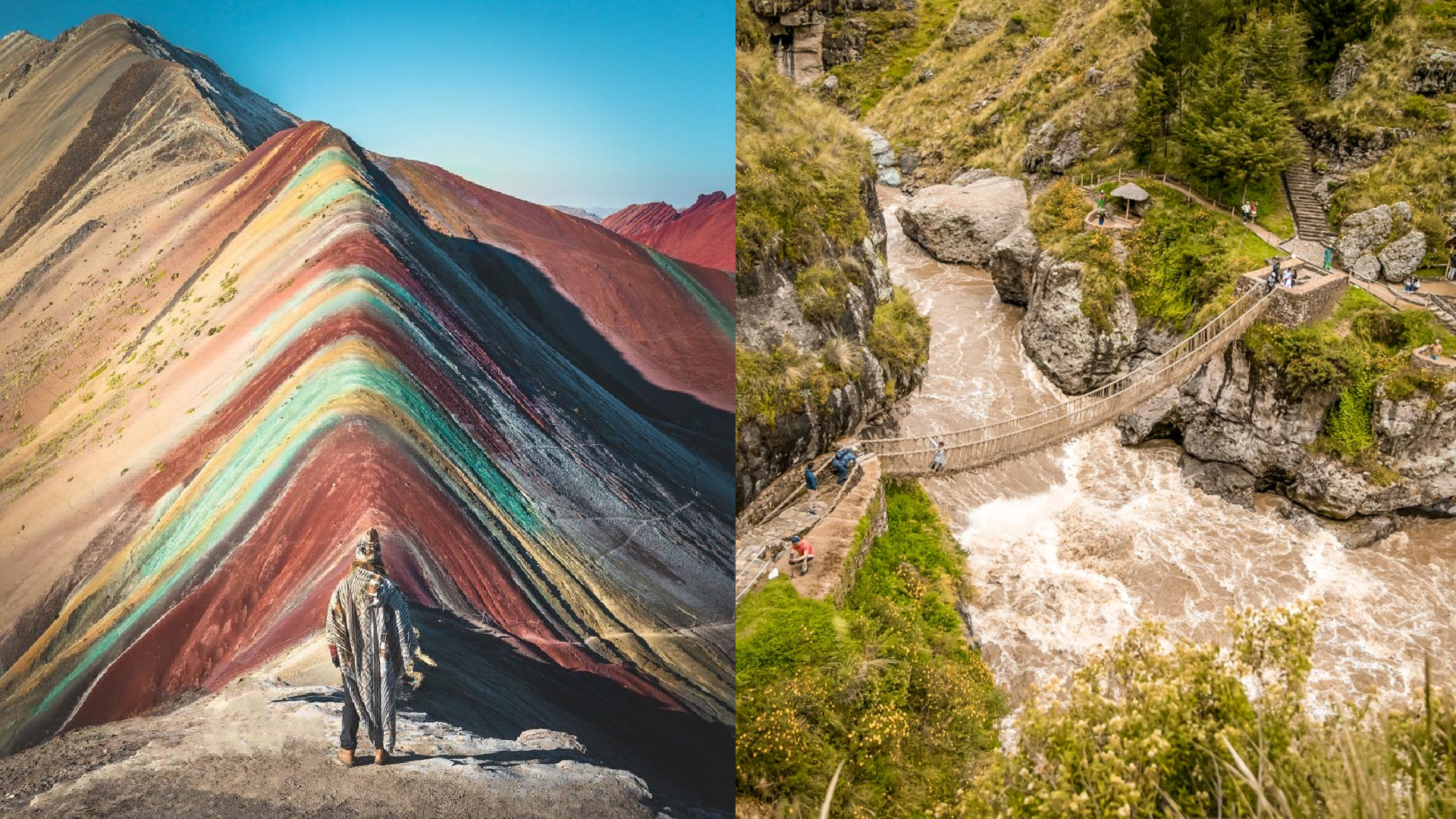
Where to Stay
Historic Center for First-Time Visitors
Allows you to walk almost everywhere and access museums, restaurants, and pickup points. Options range from hostels to boutique colonial houses. If your time is limited, this area minimizes travel.
San Blas for Culture and Views
Located uphill, with workshops, cafés, and small hotels. Streets are steep, so consider taxis if altitude affects you. In return, you get relative quiet and panoramic views.
Ollantaytambo if You
A base in the Sacred Valley for boarding the morning train to Machu Picchu without leaving Cusco at dawn. Convenient in high season or for family trips. You can return to Cusco at sunset or stay another night in the valley.
How to Book Visits and Tours
Booking by WhatsApp or Form
Send your travel date, number of people, hotel or pickup point, and chosen tour. You’ll receive a confirmation with schedule and list of inclusions. Keep the receipt on your phone.
Confirmation and Policies
Ask whether the price includes entrance fees for the Tourist Ticket, temples, lunch, and a bilingual guide. Check change policies, flexibility for flight delays, and any surcharge for pickups outside the center.
Payments and Logistics
Local cash, cards, or payment links are accepted. For Machu Picchu, purchase entrance tickets, train, and bus in advance; respect your assigned time and designated route. Allow generous transfer times to avoid missed connections.

